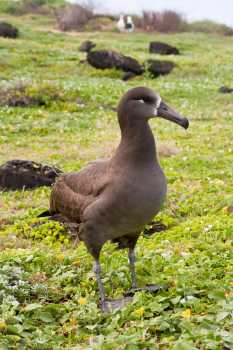ACAP's Executive Secretary attended the Ninth Regular Session of the Scientific Committee (WCPFC-SC9) of the Western and Central Pacific Fisheries Commission (WCPFC) in Pohnpei, Federated States of Micronesia last week, where he gave two presentations (click here).
The first paper was a Progress Report on the Development of a Seabird Identification Guide for use by tRFMOs. The second was on the benefits of Electronic Monitoring of Seabird Bycatch to obtain detailed information on seabird interactions to allow an analysis of the effects of fisheries on seabirds and an evaluation of the effectiveness of bycatch mitigation measures.
The meeting also assessed the implications on seabird interaction rates of the exemption in the North Pacific of small-vessels less than 24 m in length from the WCPFC’s Conservation and Management Measure for Mitigating Impacts of Fishing on Seabirds (Paragraph 10, CMM 2012-07).
The following recommendations were made by WCPFC-SC9 for consideration by the WCPFC Commission at its next meeting to be held in Cairns, Australia in December this year.
1. In order to address the impacts of vessels less than 24 m fishing in the North Pacific (north of 23°N) without seabird mitigation; SC9 recommended that seabird bycatch rates for vessels less than 24 m and equal to or greater than 24 m fishing with longline gear need to be investigated. The investigation is required due to the high overlap between the longline fishery in the north Pacific (north of 23°N) and North Pacific albatrosses, and paucity of bycatch data; and that nearly 60% of longline vessels in the North Pacific are less than 24 m in length.
2. That ACAP forwards the seabird identification guide to the WCPFC Secretariat for circulation to all relevant national and regional observer programmes for their advice and input into the development of the guide.
3. That a pilot project assessing the utility of electronic monitoring be undertaken in the WCPFC longline fishery.

A Black-footed Albatross of the North Pacific, photographed by Lindsay Young
Warren Papworth, ACAP Executive Secretary, 21 August 2013

 English
English  Français
Français  Español
Español